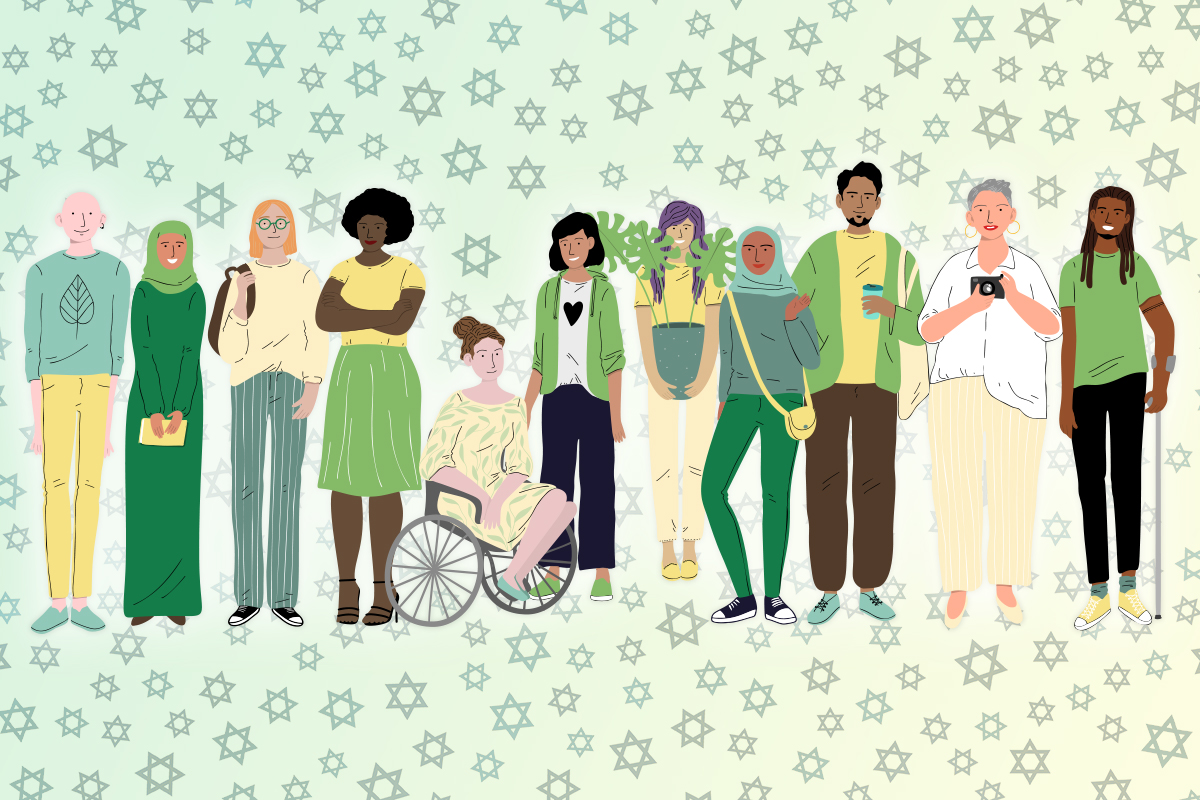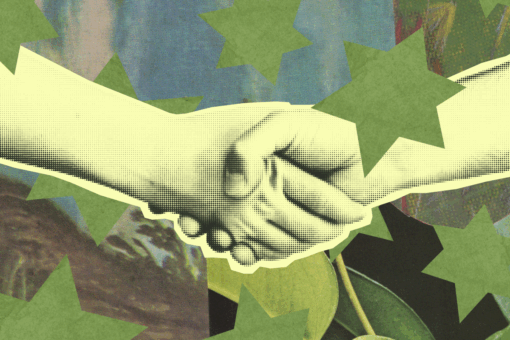In summer 2019, I organized a community Shabbat service and dinner. Everything was planned and ready to go: the Facebook event was made and RSVPs kept coming in; I had recruited someone to lead services; and I finally found a bakery that sold challah.
And then, the week of the event, someone messaged me asking about the event’s physical accessibility. I had absolutely no idea how to respond because there wasn’t an accessibility plan.
I was so frustrated with myself. I care so much about inclusion and social justice — so how could this have slipped my mind? I told people to bring vegetarian potluck items and to let me know if they had any dietary concerns. I was making the service as pluralistic as possible, defining all Hebrew words and incorporating a mix of different traditions. Yet I hadn’t even thought to find out if the host’s apartment was wheelchair accessible, and it turned out it wasn’t.
I, like so many activists, had left disability out of intersectionality.
I was deeply ashamed and very aware of my privilege as a physically able-bodied person. The person who messaged me graciously offered to host the Shabbat instead, and we scheduled a time to get coffee and chat about logistics. I was almost too embarrassed to go to the meeting, figuring that this person must hate me.
Fast forward to a year and a half later: This person is my partner, I identify as disabled, and we both regularly advocate for disability justice in our communities.
How the hell did this happen?
My disability journey has been rooted in teshuvah, the Jewish repentance process. Teshuvah means “returning,” referring to one’s soul returning to righteousness. In Judaism, it is not enough to simply acknowledge that you have done something wrong and apologize, you must also “make a turn,” improve, and transform.
This kind of restorative justice contradicts the popular cancel culture that does not allow people the opportunity to change. Instead of being written off as an ableist person for not thinking about accessibility, I was allowed the opportunity to educate myself and learn from my mistakes. (To be clear, it is not the job of the marginalized to educate people, and they do not owe it to you. If they choose not to, you must educate yourself.)
When I went to that meeting, my now-partner offered me grace and recognized my capability to change. I was able to recognize the harm that I had done, and used that moment to begin a journey of learning and unlearning.
My introduction to this new world resulted in me viewing my PTSD — something that I had experienced for 20 years — as a disability, recognizing the internalized ableism that I have felt my entire life. As I became versed in disability justice and took pride in my disability for the first time, I began to advocate for my and others’ needs.
In doing so, I allow others to make teshuvah and use it as a learning opportunity. I’ve had some remarkable conversations with my colleagues and community members where I’ve seen their gears turning and the things that I advocate for become a reality.
Jewish communities have so much to learn from this practice. We must do more than apologize for our harm; we must also know that we will never be perfect, and commit to do better and never stop growing.
And this does not just apply to disability! Ask yourself: Is your community committed to educating and improving itself to becoming more inclusive? Are you listening to marginalized people (Jews of Color, queer folks, poor and working class folks, etc.)? If these people aren’t in your communities, ask yourself why that is and what you can do to make them feel more welcome.
I have encountered many Jewish communities that either think they have reached the pinnacle of radical inclusion so they no longer ask themselves and others how to do better, and/or they have accepted that they will never be inclusive enough. Neither of these are acceptable. There is always room to learn and unlearn, and I guarantee you that there are people with marginalized identities who are not fully included in your community. They are worth the investment.
And what better time to dedicate your Jewish community to disability justice than now, when we are still mostly meeting online? The pandemic has made Jewish life more accessible than ever with virtual Jewish ritual, learning, and social gatherings. The problem is that disabled folks have long-advocated for these accommodations and many were told that they were not possible or not a priority, only to see these accommodations become possible once able-bodied people needed them as well. My partner, who is chronically ill, and I, someone who gets overstimulated easily, have been able to attend more Jewish programming than ever during the pandemic. Going back to “normal” after this pandemic should not be our goal, but an opportunity for Jewish communities to take action so that when we do return to our synagogues, it is a much more inclusive space.
Here are some key things I’ve learned about making Jewish spaces more accessible to disabled people, many of which can be applied to all kinds of marginalized identities.
1. Don’t wait for someone who needs accommodations. You don’t need a rabbi who uses a wheelchair to install a ramp on your bimah.
2. You may not know what people in your community need, especially if they have invisible disabilities. Maybe people haven’t asked you for a large print siddur or a quiet room before, but they would benefit from them.
3. If you don’t have disabled people in your community, ask yourselves why. Creating an accessible space demonstrates that you want them there and you are investing in people being there in the future.
4. Evaluate your priorities and values. You may need to make some sacrifices in the name of inclusion, such as having an event at an accessible space and losing the “homey” feel of having it in an apartment, or getting rid of some tables so you can make the space wide enough for mobility aids.
5. Hire a disabled person (yes, hire, as in pay folks with marginalized identities for their labor!) to consult with you about how to make sure your website, spaces, and events are accessible. There are likely many things you should implement or could do better on.
I cannot reiterate this enough: Even if you install a ramp in your synagogue, even if you hire an ASL interpreter, even if you consult someone who says your website is accessible to blind or low vision folks, or those who are deaf or hard of hearing… you cannot give your community a check mark and move on. Your learning is never done. Never stop listening to people with marginalized identities, challenging your internalized prejudices, and educating yourselves.
*In this article, I do what personally resonates with me and a growing number of disability advocates by using identity-first language instead of person-first language (“disabled person” instead of “person with a disability”), but people in the disability community have a variety of opinions. You should always ask people what terms they prefer for themselves.



